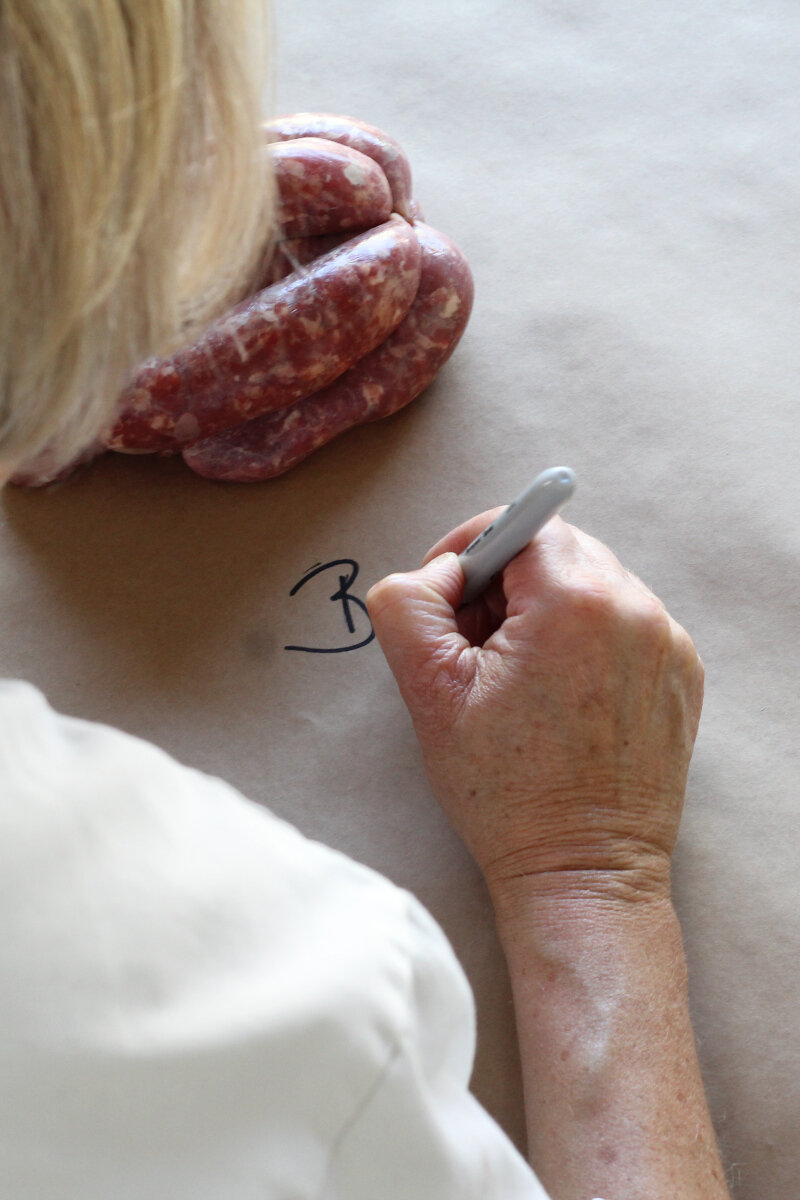Why I became a butcher
It started 20 years ago when I was first working on a biodynamic farm in Sussex called Plaw Hatch. I needed to find a butcher to help prepare the first animal they had reared for beef.
I found a ‘gentleman’ butcher (I didn’t know there was such a thing until that day!) He turned up in a shirt and tie and all that was missing was a straw boater hat. His name was David Swaine and he had owned one of the most successful butchers’ shops in Sussex; his reputation for selling good meat reached far and wide.
I’ll admit, my eyes widened on that first day when the back of the lorry opened and I saw the enormous beef carcass inside. It had been cut into 4 sections: two forequarters and two hindquarters. A hindquarter was lowered to the block by David himself and I was amazed at his strength as well as his gentleness (he must have lifted approximately 80 kilos). I attached myself to David’s side and I watched as he silently and artfully sawed, cut, rolled and tied the meat before him.
There was a peacefulness about him that I can now understand must have come from the love he had for his work. All day he worked in this way on the one carcass. As the day drew to a close, he laid out before me a whole range of cuts and joints that were a feast for the eye. I had never before appreciated how much skill goes into butchery. It’s a work of art, a real craft.
I remember asking him what makes for the best beef. He told me how he used to always rear a few animals for himself on a piece of land that he owned close to his home. His animals never spent any of their time indoors and their roaming and hardiness to survive the cold winter months outside was what gave his beef fantastic flavour. It took a lot longer to produce an animal this way and it wouldn’t be as fat as many beasts found hanging in the back of the butchers’ shop but, if it’s flavour that you want, this is the way to do it. I wouldn’t be surprised if it was also the quality of the soil on his land. He only had a smallholding and I’m sure that, as he wasn’t a commercial farmer, he wouldn’t have used any chemicals on it.
Shortly afterwards I had a similar experience with another butcher, again called David. He had the same stature and look of wholesomeness and gentleness as the first David. This David was a fourth-generation butcher of the Lidgate family and had one of the most successful butchers’ shops in the whole of the UK, located in Holland Park, London. I will never forget the day that he stood before us, filled with passion and clarity, teaching us what he believed made the best beef.
Breed and feed. These words still stick in my mind to this day. I was so excited and amazed when he told me how Aberdeen Angus beef produced in the Highlands of Scotland will taste different to Aberdeen Angus beef produced in the lowlands of the UK. Scotland has a reputation for producing some of the best beef in the world. This is because of the rich variety of grasses that still grow in the Highlands, as well as the health of the soil as most farms are farmed extensively with little or no use of fertilisers, herbicides and pesticides. Many cattle are wintered outdoors and only fed hay as it is difficult for many to grow cereals in these parts.
And where does breed come in? In order for cattle to thrive on mountain sides or on pasture that hasn’t been sown with modern grass varieties, you need hardy breeds! These breeds are the native and rare-breeds of the UK. They do well on little intervention and do well on poor pasture as they are not fussy grazers and make the most of all that is available to them.
These breeds naturally take longer to gain weight and are smaller in size. This is why many farmers and butchers moved away from native breeds and looked to continental breeds for size and speed of finishing with a hope for short-term gain. Thankfully, due to customer demand for nutritional quality, flavour and environmental concerns, many farms are returning to good husbandry of the soil and animals.
So, I’m lucky to have had two honourable, inspiring, butchers in my life.
Unfortunately, I have also experienced dishonourable butchers too. Those who have lied about provenance and farming practice, been disinterested or unconcerned as to the way the animals have been produced or the possible adverse health effects of adding preservatives, flavourings and colourings to meat when making sausages or curing bacon.
I decided that I wanted to ensure that the meat that we so painstakingly produce was handled by people who care as much as we do. I therefore decided to get involved with the butchery myself and was fortunate enough to find Peter Martyn-Smith who has taught me everything I know and to whom I am very grateful.







